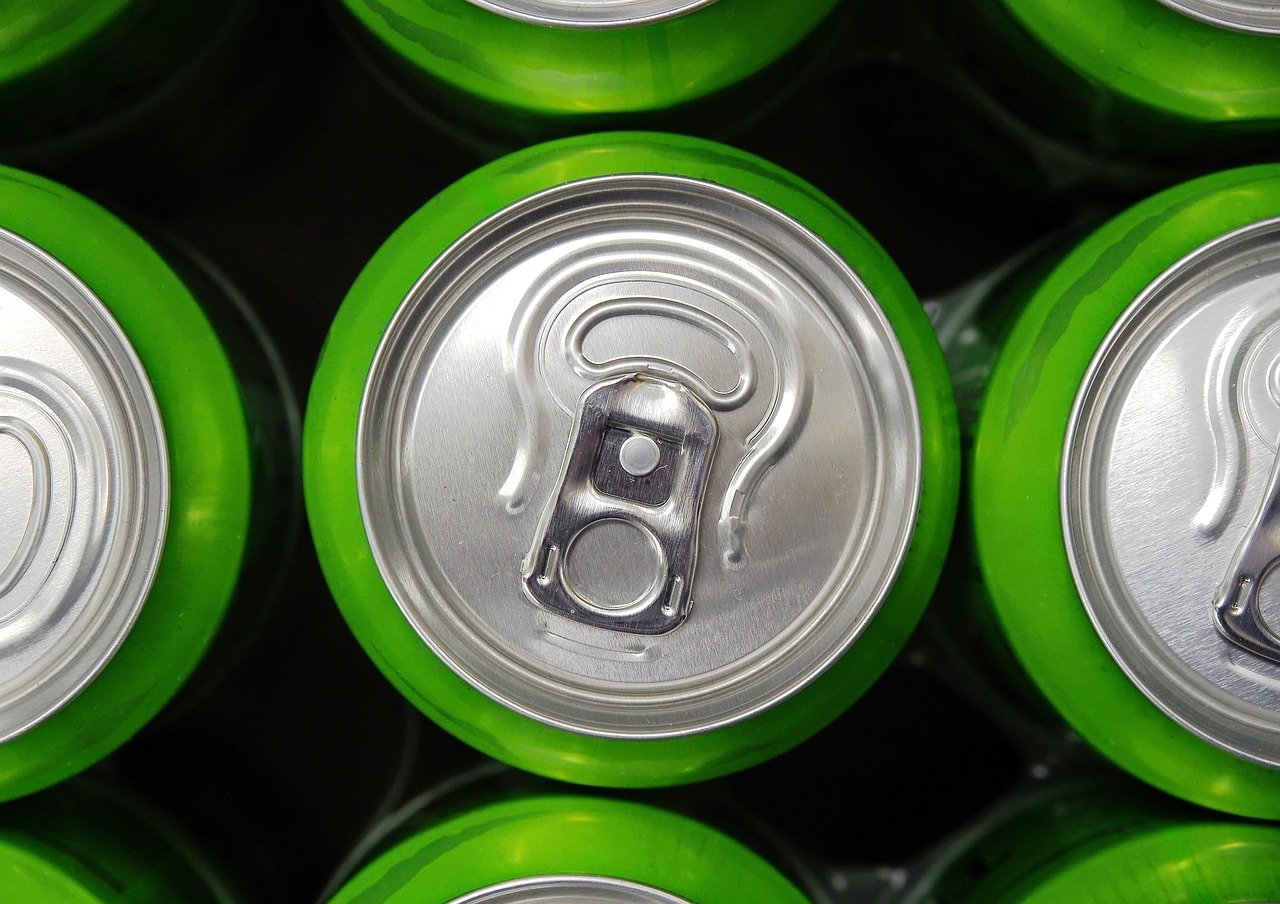Metals and Non-Metals
Elements like most substances can be classified according to their physical and chemical properties.
Physical Properties
If we examine different common objects such as a metal spoon (chromium), a piece of aluminum foil, the blade of a knife (iron), sugar, salt, water, a piece of charcoal etc... we can establish certain common characteristics that can be used to classify them. For example, the blade of a knife, aluminum foil, and the spoon are all shiny, they can all be easily bent, and if we put them in a flame or fire the heat easily spreads from one end to the other. These substance (aluminum, chromium, copper, iron) are often used in electrical devices circuits (why?) We say that they are good conductors. The other substances are not shiny, they cannot be bent easily and they may burn but will not conduct heat (or electricity) easily.

Tin is a very common and useful metal. At the end of this activity you should be able to name some of its physical properties.

This is a picture of a limestone quarry. Limestone is a compound known in chemistry as calcium carbonate containing Calcium, Oxygen, and Carbon and it is used to make chalk as well as many other useful products.
Calcium is a very soft metal. The degree of hardness of a metal is a physical property of metals as well.
Elements can be generally classified in a similar fashion as either metals or non metals.
The following table shows the basic physical properties of some common elements:
| Element |
Luster (Is it Shiny?) |
Ductility (Can you make a wire or pipe out of it?) |
Malleable (Can you bend it?) |
Conductivity |
Metal or Non-Metal |
| Copper | Yes | Yes | Yes | Yes | Metal |
| Aluminum | Yes | Yes | Yes | Yes | Metal |
| Sulphur | No | No | No | No | Non-Metal |
| Carbon | No | No | No | Very poor | Non-Metal |
Metalloids: There is also a group of elements which display some properties of metals and some properties of non-metals.
Silicon for example is shiny but it is a poor conductor, it is somewhat ductile, but it is not malleable.
Carbon is also a metalloid because it conducts heat electricity somewhat (a poor conductor).
Chemical Properties
We already know that elements are pure substances made of only one type of atoms.
To test the reactivity (reactivity is a chemical property) in the a laboratory experiment we react different substances with water and acids.
Chemical reactions (chemical changes) are characterized by these trends: a new substance is produced, a colour change, a change in odour, formation of bubbles of a gas, energy (heat, light or both) given off.
Chemical reactions are not easily reversible.
To test chemical properties of different elements we react these elements with water and with an acid and record the results in the following table.
We want to see if bubbles of gas will form and how fast these bubbles will be produced (if any). This will tell us the relative reactivity of the elements we are testing.
We also add a few drops of an indicator (phenolphthalein) to see if the resulting product in solution after the reaction is an acid or a base.
Phenolphthalein is clear in an acid and turns pink in a base.
| Element | Reaction with Cold Water | Reaction with Hot Water |
Reaction with Acid (dilute HCl) |
Colour of Solution after Reaction |
Metal or Non-Metal |
| Calcium | Slow -- few bubbles | Fast -- lots of bubbles | Very Fast - visible reaction with lots of gas | Pink (Basic) | Metal |
| Potassium | Fast | Very Fast | Extremely Reactive | Pink (Basic) | Metal |
| Sulphur | No | No | No | No | Non-Metal |
| Carbon | No | No | No | Very poor | Non-Metal |
| Magnesium | slow at first - bubbles form over time | Fast | very fast - lots of bubbles form | Pink (Basic) | Metal |
| Sodium | Fast | Very Fast | Extremely Reactive | Pink (Basic) | Metal |
| Iron (steel wool) | No visible reaction | no immediate reaction -- but rusting occurs if left overnight | Reaction occurs slowly but if left overnight it will show formation of gas | Solution turns orange after a few hours | Metal |
Conclusions:
- Metals react with water and acid to form a gas. When this gas is tests using a flame test it proves to be Hydrogen Gas.
-
The simplified general equation for a reaction of a metal with water is:
Metal (s) + Water (l) ===> Hydrogen (g) + Metal Hydroxide (aq - solution) - The remaining solution of a reaction of a metal (metal oxides should be used to show this property) is a base.
- Non Metals do not react with water.
- In general, the oxides of metals dissolved in water will form acids
- Elements can be classified according to their reactivity (a chemical property) in a table that groups all elements according to their chemical properties .
- This table is known as the Periodic Table of the Elements.


